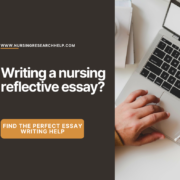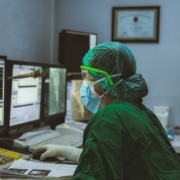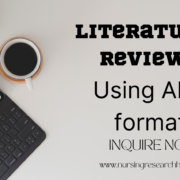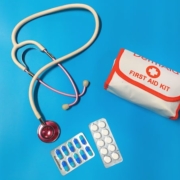How to Study Anatomy and Physiology for Nursing Students: A Comprehensive 5 Step Guide
How to Study Anatomy and Physiology for Nursing Students: A Comprehensive 5 Step Guide
Anatomy and physiology serve as the building blocks of nursing education, providing nursing students with a comprehensive understanding of the human body and its intricate functions. Proficiency in these subjects is vital for aspiring nurses to excel academically and develop the necessary skills to deliver quality patient care.
However, studying anatomy and physiology can pose significant challenges due to the complexity of the topics and the vast amount of information to grasp. In this blog post, we will delve deeper into the strategies and techniques that nursing students can employ to effectively study anatomy and physiology, enabling them to build a solid foundation of knowledge and succeed in their studies.

1. Understand the Importance of Anatomy and Physiology
To embark on an effective study journey, nursing students must first recognize the significance of anatomy and physiology in the field of nursing. Anatomy focuses on the structure of the human body, while physiology delves into the mechanisms and functions that occur within it. By understanding these subjects, nursing students can comprehend how diseases manifest, how medications interact with the body, and how to provide appropriate patient care. This understanding is essential for making informed clinical decisions and ensuring optimal patient outcomes.
2. Develop a Strong Foundation
a. Familiarize Yourself with the Terminology:
Anatomy and physiology come with a specialized vocabulary. Begin by learning the language of these subjects, familiarizing yourself with anatomical terms, directional planes, and body systems. This knowledge will help you navigate through textbooks, lectures, and clinical scenarios more effectively.
b. Establish a Study Schedule:
Consistency is key when studying anatomy and physiology. Create a study routine that suits your learning style and commitments. Dedicate regular time slots for studying these subjects, ensuring that you allocate sufficient time for both theory and practical application. By adhering to a schedule, you can ensure steady progress and prevent overwhelming last-minute cramming sessions.
c. Use Visual Aids:
The human body is a complex structure, and visual aids can greatly enhance your understanding of anatomical structures and physiological processes. Utilize resources such as anatomical charts, diagrams, and models to supplement your learning. Visualizing the human body in three dimensions can significantly facilitate the learning process and help you grasp the spatial relationships between different structures.

3. Utilize Effective Study Techniques:
a. Active Learning:
Passive reading alone is insufficient for mastering anatomy and physiology. Engage in active learning strategies that require your active participation and application of knowledge. Instead of simply reading textbooks, use techniques such as self-quizzing, summarizing concepts in your own words, and teaching the material to others. Actively engaging with the information enhances retention and promotes a deeper understanding of the subject matter.
b. Mnemonic Devices:
The human body is replete with complex names, structures, and processes. Mnemonic devices are memory aids that can help you remember and recall this information more easily. Create mnemonic devices such as acronyms, rhymes, or visualization techniques to memorize complex anatomical structures, physiological processes, and lists. These creative memory aids can be invaluable during exams and in clinical practice.
c. Break Down Complex Concepts:
Anatomy and physiology can be overwhelming due to their intricacy. To make studying more manageable, break down complex topics into smaller, more digestible parts. Focus on understanding the underlying principles and relationships between different anatomical structures and physiological processes. By mastering the fundamentals, you lay a solid foundation for understanding more advanced topics.
d. Practice with Anatomy and Physiology Tools:
Take advantage of technology and digital resources that provide interactive experiences. Explore anatomy apps, online quizzes, virtual dissection tools, and interactive anatomy atlases. These resources offer an immersive learning experience, allowing you to practice identifying structures, exploring physiological concepts, and applying your knowledge in realistic scenarios.
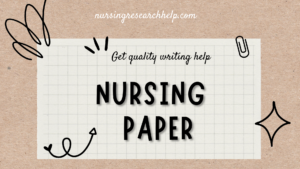
4. Form Study Groups and Seek Support
a. Join Study Groups:
Collaborating with your peers and forming study groups dedicated to anatomy and physiology can be immensely beneficial. Group discussions provide opportunities to clarify concepts, share study resources, and gain different perspectives on challenging topics. Explaining concepts to others also solidifies your own understanding.
b. Seek Academic Support:
Do not hesitate to reach out to your instructors, teaching assistants, or academic support services for guidance and clarification. They can offer additional resources, suggest study materials, or provide extra explanations to supplement your learning. Utilize office hours or seek online support to address any uncertainties or difficulties you encounter.
5. Apply Concepts through Clinical Relevance
a. Relate Anatomy to Clinical Practice:
Understanding the clinical relevance of anatomy and physiology is crucial for nursing students. Explore the practical applications by linking anatomical structures to clinical signs, symptoms, and diagnostic procedures. Recognizing the connection between anatomical structures and their functional implications in patient care will deepen your understanding and enhance your clinical reasoning skills.
b. Clinical Practicum and Simulations:
Many nursing programs offer clinical practicums and simulations. These hands-on experiences provide opportunities to apply anatomical and physiological knowledge in a safe and supervised environment. Engage actively during these practical sessions, ask questions, and seek feedback from your instructors. By immersing yourself in clinical scenarios, you can bridge the gap between theory and practice.
c. Reflect on Case Studies:
Case studies are valuable learning tools that allow you to apply your anatomical and physiological knowledge to real-world patient scenarios. Engage in case study analysis, where you can analyze patient histories, interpret lab results, and develop care plans based on your understanding of anatomy and physiology. This reflective practice enhances your critical thinking skills and reinforces your knowledge.
Conclusion
Studying anatomy and physiology is an essential part of nursing education, laying the foundation for a successful nursing career. By employing effective study techniques, developing a strong foundation of knowledge, and making connections to clinical practice, nursing students can navigate the complexities of these subjects more effectively. Patience, consistency, and a genuine curiosity for the human body are key to successfully mastering anatomy and physiology. Embrace the journey of learning, and you will reap the rewards as you progress through your nursing career, armed with a comprehensive understanding of the human body and its intricate functions.
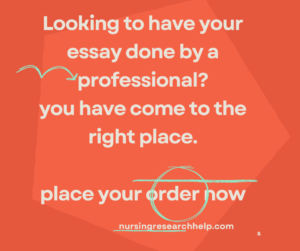
Nursing Assignment Help
At Nursing Research Help, we understand the challenges faced by nursing students in their anatomy and physiology studies. That’s why we are here to offer our specialized assignment help services tailored specifically for nursing students. Our team of experienced professionals consists of subject matter experts who are well-versed in anatomy and physiology. We can provide comprehensive assistance with assignments, ensuring that you receive top-notch guidance and support.
Whether you need help with understanding complex concepts, structuring your assignments, or conducting research, our services are designed to alleviate your academic stress and help you excel in your studies. With our commitment to delivering high-quality work and meeting deadlines, you can trust us to provide the assistance you need to succeed in your nursing education. Don’t hesitate to reach out to us and let our dedicated team of experts support you on your academic journey.


